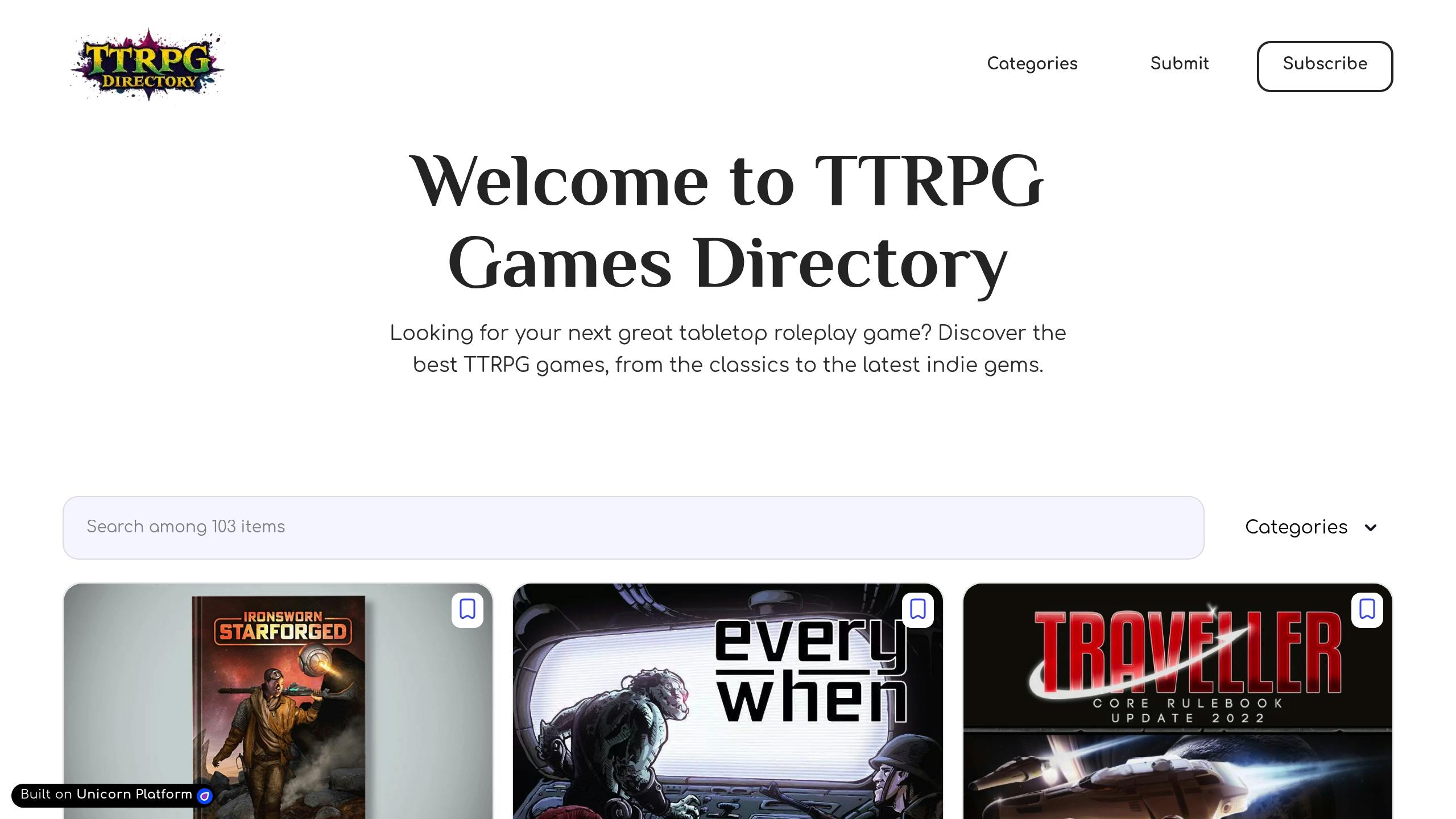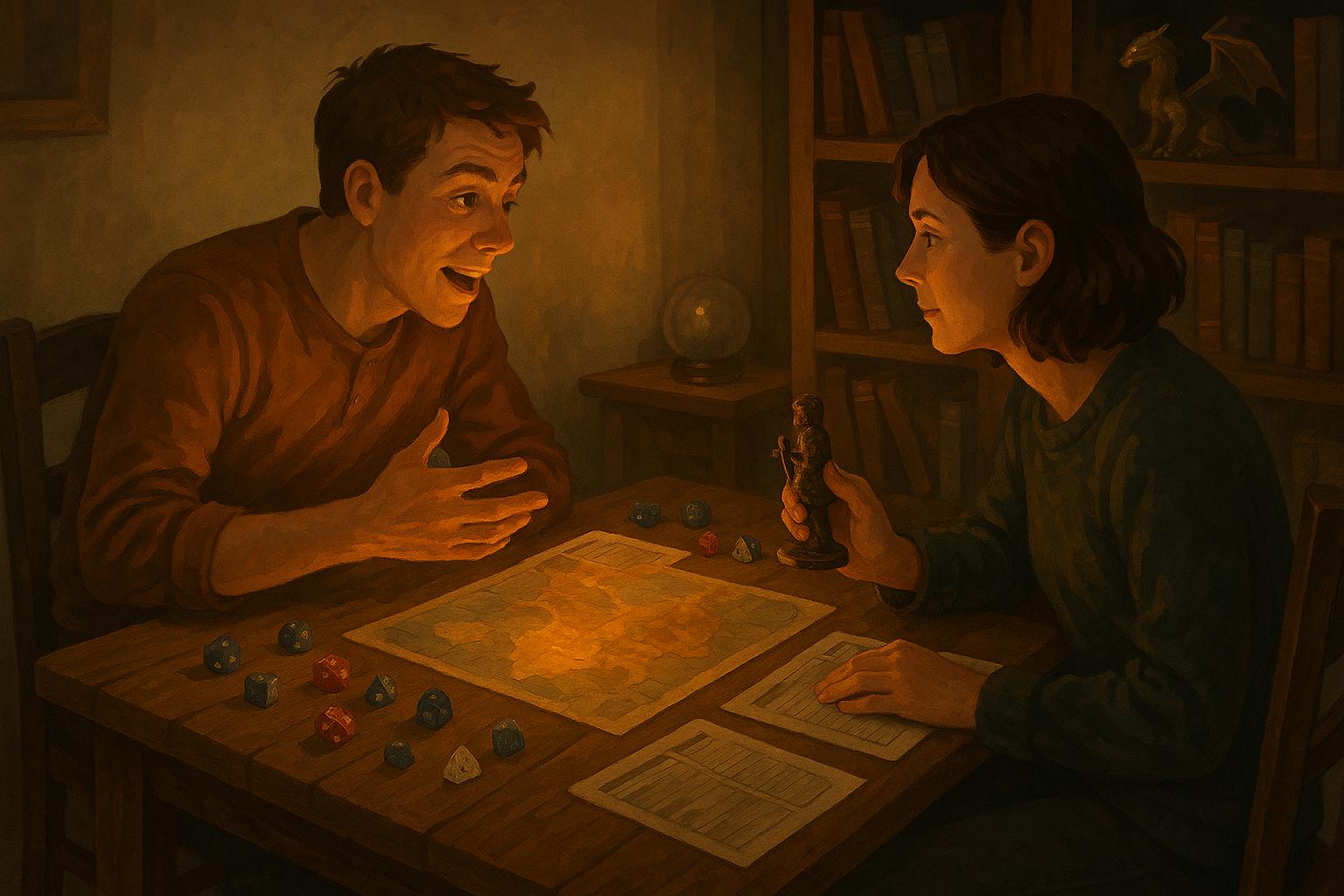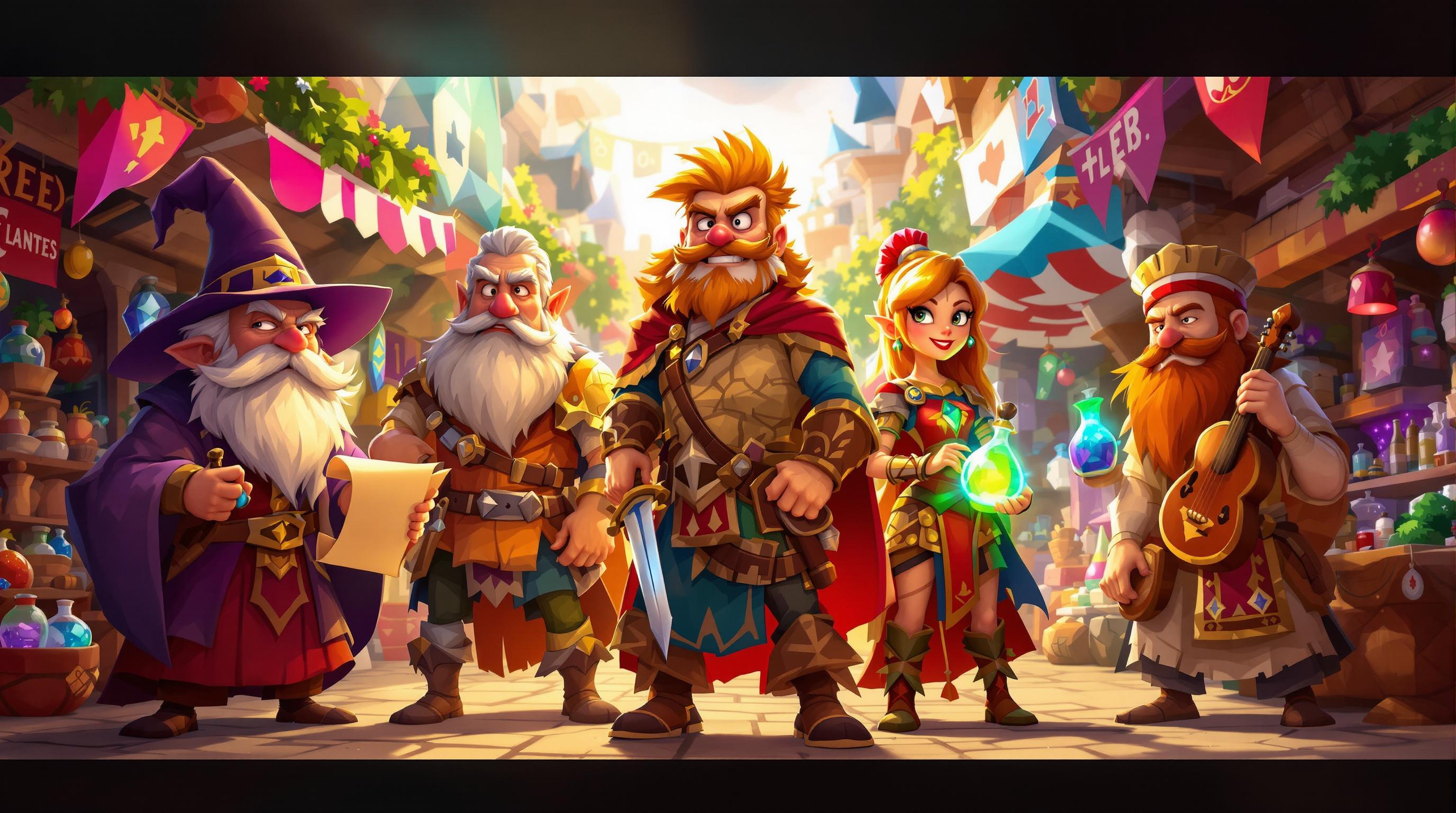Superhero RPG modules are perfect for beginners, offering pre-made characters, clear storylines, and detailed settings to simplify gameplay. They help new players focus on storytelling while learning game mechanics naturally. Popular modules like Emerald City Knights and The Island of Dr. Destroyer provide structured adventures with varying lengths and themes, from urban crime-fighting to tactical prison breaks.
Key Highlights:
- What’s Included: Pre-made characters, settings, plots, and step-by-step guidance for Game Masters (GMs).
- Best Modules for Beginners:
- Emerald City Knights: Urban setting, 20-30 hours, structured gameplay.
- The Island of Dr. Destroyer: Action-packed, 8-12 hours, classic comic-book theme.
- To Serve and Protect: Moral dilemmas, 10-15 hours, character-driven story.
- Tips for Success: Tailor modules to your group’s interests, connect player backstories to the plot, and use tools like Hero Lab or Roll20 for smoother gameplay.
Quick Comparison
| Module Name | System | Length | Key Features | Best For |
|---|---|---|---|---|
| Emerald City Knights | Mutants & Masterminds | 20-30 hours | Linked adventures, urban setting | New players seeking structured gameplay |
| The Island of Dr. Destroyer | Champions | 8-12 hours | Base infiltration, action-packed | Groups looking for classic comic-book action |
| To Serve and Protect | Champions | 10-15 hours | Character-driven story, moral dilemmas | Teams that enjoy deep storytelling |
| Champions Battlegrounds | Champions 5E | 25-30 hours | Five connected scenarios, villain arcs | Long-term campaign planning |
| Escape From Stronghold | Champions | 6-8 hours | Prison break theme, tactical gameplay | Quick-start adventures |
Start your game with a beginner-friendly module, host a Session Zero to set expectations, and focus on fun over mechanics. Superhero RPGs are all about teamwork, creativity, and immersive storytelling.
What Makes Up a Superhero RPG Module
RPG Modules Explained
A superhero RPG module is essentially a pre-written adventure designed to provide structure and direction for both players and game masters. These modules include detailed maps, non-player characters (NPCs), and plot hooks, all tailored to create an immersive superhero-themed experience. Understanding these elements helps groups pick adventures that match their playstyle, as outlined in the Introduction.
How Modules Help New Players
For newcomers, modules can make learning superhero RPGs much easier. They often include simplified rules and quick-start guides that introduce game mechanics gradually through gameplay. For example, "The Island of Dr. Destroyer" (1981) offers clear objectives, allowing players to focus on understanding the basics without feeling overwhelmed.
Key Parts of Superhero Modules
A well-crafted superhero module includes several essential components that work together to create a memorable adventure:
| Component | Purpose |
|---|---|
| Main Plot | Drives the story forward |
| Location Details | Establishes the setting |
| Character Elements | Introduces key figures |
| Power Guidelines | Ensures game balance |
| Team Mechanics | Promotes group cooperation |
Scenarios often challenge players with tough choices, such as prioritizing hero duties over civilian safety. Teamwork is a major focus, with encounters designed to require combined abilities. This mirrors the collaborative spirit of superhero teams found in comic books.
Game master (GM) sections often include guides for improvisation and quick-reference sheets, helping even less experienced GMs lead sessions confidently. These tools ensure the game maintains the action and drama that define the superhero genre.
When these elements come together, they create the structured yet flexible gameplay seen in popular modules like Emerald City Knights.
Related video from YouTube
Best Superhero RPG Modules for Beginners
Choosing the right module can make all the difference when introducing new players to superhero RPGs. The ideal beginner modules offer straightforward objectives while delivering the thrill of superhero adventures.
Module Comparison Chart
| Module Name | System | Length | Key Features | Best For |
|---|---|---|---|---|
| Emerald City Knights | Mutants & Masterminds | 20-30 hours | - Linked adventures - Urban setting |
New players seeking structured gameplay |
| The Island of Dr. Destroyer | Champions | 8-12 hours | - Base infiltration - Action-packed |
Groups looking for classic comic-book action |
| To Serve and Protect | Champions | 10-15 hours | - Character-driven story - Moral dilemmas - Engaging roleplay |
Teams that enjoy deep storytelling |
| Champions Battlegrounds | Champions 5E | 25-30 hours | - Five connected scenarios - Increasing difficulty - Villain development |
Long-term campaign planning |
| Escape From Stronghold | Champions | 6-8 hours | - Prison break theme - Reusable location - Tactical gameplay |
Quick-start adventures |
This chart simplifies the decision-making process, but the module's structure is equally important.
Open World vs. Story-Driven Modules
Your choice between open world and story-driven modules shapes the flow of your superhero campaign. Story-driven modules offer a guided experience with a clear storyline. These are perfect for new Game Masters, as they minimize prep work with pre-designed encounters, well-defined goals, and pacing tips[3].
Modules like Champions Battlegrounds strike a balance between structure and player freedom. For beginners, story-driven modules are a great way to learn the rules while immersing players in the narrative. Look for options that align with your group's preferred style of heroics, as discussed in Key Parts of Superhero Modules.
Once you've picked a format, the next step is tailoring it to your group's preferences.
sbb-itb-b8b00a5
Making Modules Work for Your Group
Tailoring modules to fit your group's interests can make the experience much more engaging. By building on the structured frameworks in our module comparison chart, you can tweak elements to add a personal touch without losing focus.
Adjusting Module Settings
Start by reviewing the core elements of your chosen module, as outlined in our earlier breakdown of superhero modules. The key is to keep the main conflicts intact while adapting the details to suit your group's preferred setting [1][2].
| Module Element | How to Adapt | Example |
|---|---|---|
| Location Names | Change to fit the universe | "City Park" → "Futuristic Plaza" |
| Technology Level | Match the setting's norms | Genetic enhancements → Cosmic energy sources |
| Organizations | Swap for setting-appropriate groups | "Science Division" → "Extraterrestrial Task Force" |
| Power Sources | Align with world rules | Radiation-based → Mystical artifact-driven |
For example, a mad scientist creating monsters in a classic superhero setting could be reimagined as a rogue corporate researcher in a cyberpunk world. This keeps the conflict familiar but makes it feel fresh and relevant to the new setting [1].
Weaving Player Stories into Modules
Incorporating player backstories into modules can make the experience more dynamic. This method is similar to the character-driven design seen in beginner-friendly modules like To Serve and Protect from our comparison chart. The idea is to connect character histories with the module's plot hooks during character creation.
- Tie NPCs to Players: Replace generic NPCs with characters tied to player backstories.
- Make Locations Personal: Use places that are meaningful to the heroes, such as where a character first discovered their powers.
- Connect Villains to Players: Link the antagonist to unresolved rivalries or events in a character's past [4].
Tools and Resources for New Players
Once you've tailored your modules to fit your group's preferences (see Making Modules Work), these tools and resources can help make your superhero RPG sessions more engaging and manageable.
Using TTRPG Games Directory

The TTRPG Games Directory is a great starting point for discovering superhero RPG systems. With its search and filter features, you can easily compare games based on complexity and mechanics.
| Feature | Benefit | Example |
|---|---|---|
| System Comparison | Evaluate game mechanics | Capers (simple) vs. Sentinel Comics RPG (moderate) |
| User Reviews | Read feedback from players | Community-voted "Best Entry Points" list |
| Resource Links | Access official materials | Core rulebooks, free quickstart guides |
| Complexity Ratings | Match games to your experience | Basic, Intermediate, Advanced |
GM Resources: Free and Paid
These resources are great additions to GM guides included in high-quality modules like Emerald City Knights (see Module Comparison).
Free Resources:
- Masks: A New Generation quickstart rules
- "Time of Crisis" adventure module for Mutants & Masterminds
- Online random generators for NPCs and plot ideas
- Community tips and guides on r/superherorpg
Paid Resources Worth Considering:
| Resource Type | Price Range | What It Offers |
|---|---|---|
| Campaign Expansion Packs | $15-40 | Extra scenarios and story content |
| Virtual Tabletop Tools | $10/month | Features for online gameplay |
| GM Toolkit Subscriptions | $5-9/month | Tools for world-building and campaign planning |
Digital tools like Hero Lab (for character creation) and Roll20 (for online sessions) can save time by reducing the need for constant rule-checking - especially helpful for running tactical scenarios in modules like Escape From Stronghold.
Choose tools that align with your module's focus. For example, narrative-focused tools work well with Masks ($20 PDF), while combat trackers are ideal for Champions scenarios. Pairing these tools with beginner-friendly modules from our comparison chart can streamline your preparation and gameplay.
Next Steps: Begin Your First Game
With the tools you’ve prepared from the earlier section, it’s time to dive into your first campaign. Start by choosing a module from the comparison chart and use the customized elements you developed in Making Modules Work for Your Group during the setup process.
Set up a GM Command Center - a well-organized play area stocked with these essentials:
| Essentials | Nice-to-Haves |
|---|---|
| Module PDF/Book | Thematic music |
| Character sheets | Tactile props |
| Dice + Cheat Sheet | Visual battle aids |
Before jumping into the action, host a Session Zero with your players. This session is a great way to:
- Build characters and establish team dynamics together.
- Discuss power levels and expectations for the campaign.
- Go over key rules and mechanics.
- Agree on a session schedule that works for everyone.
When running your first module, keep these tips in mind to make the experience smoother:
- Start with a short, introductory module to ease everyone in.
- Focus on painting vivid scenes to immerse players in the story.
- Don’t stress about perfection - keep the game flowing.
During the game, make quick rulings when needed and double-check the rules after the session. Encourage players to describe their actions in a cinematic way - it adds flair and brings the superhero genre to life. Remember, your first game doesn’t have to be flawless. The goal is to create a fun and engaging experience for everyone.
"The most important rule for your first game is to prioritize fun over mechanics. Let players attempt creative solutions, even if you need to improvise the rules. You can always refine the technical aspects in future sessions." [5]
Stick to these basics, and you’ll be ready to run your first superhero RPG module with confidence. As you gain experience, you can start adding more advanced techniques to elevate your games.


